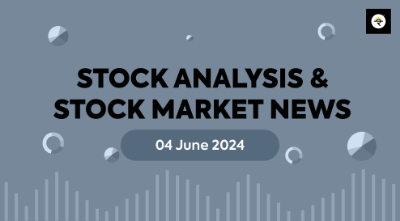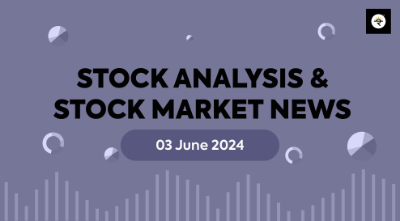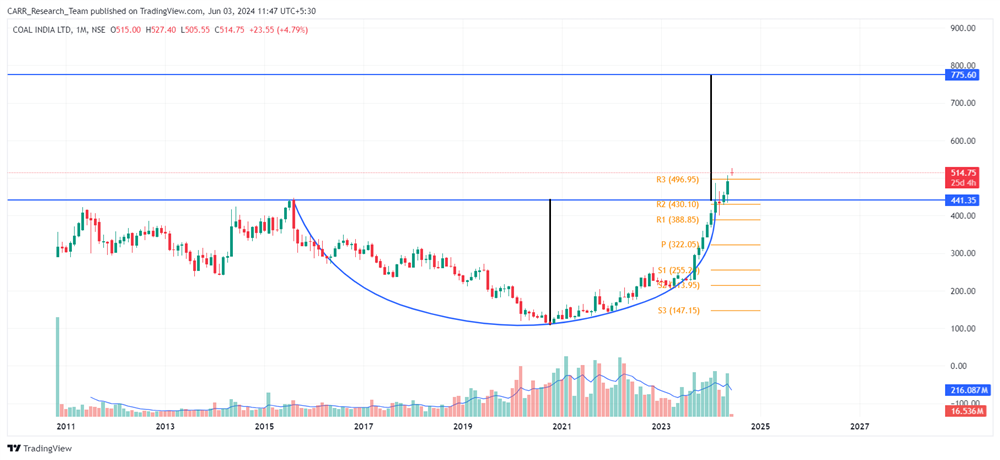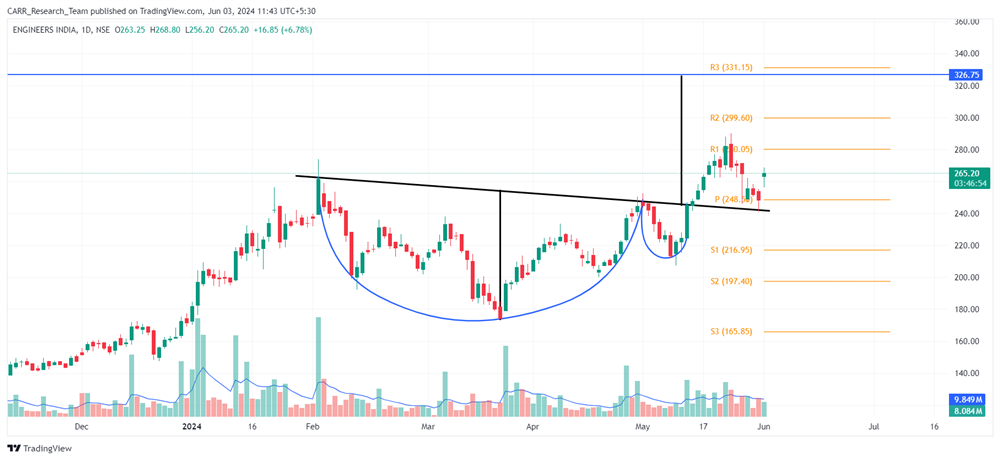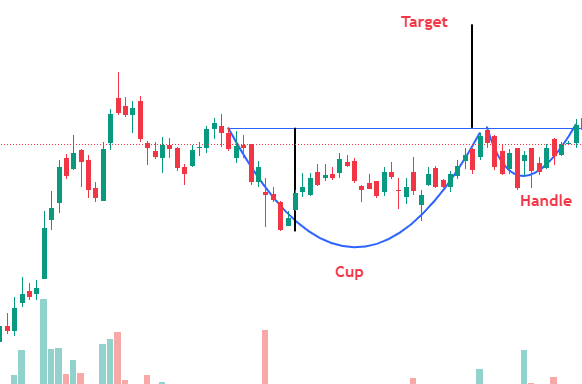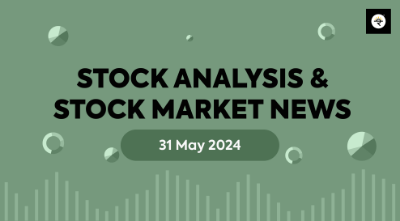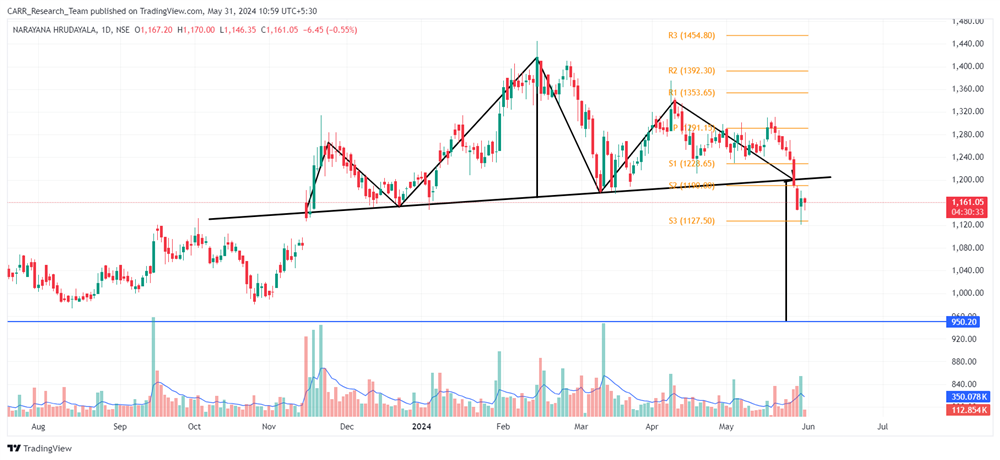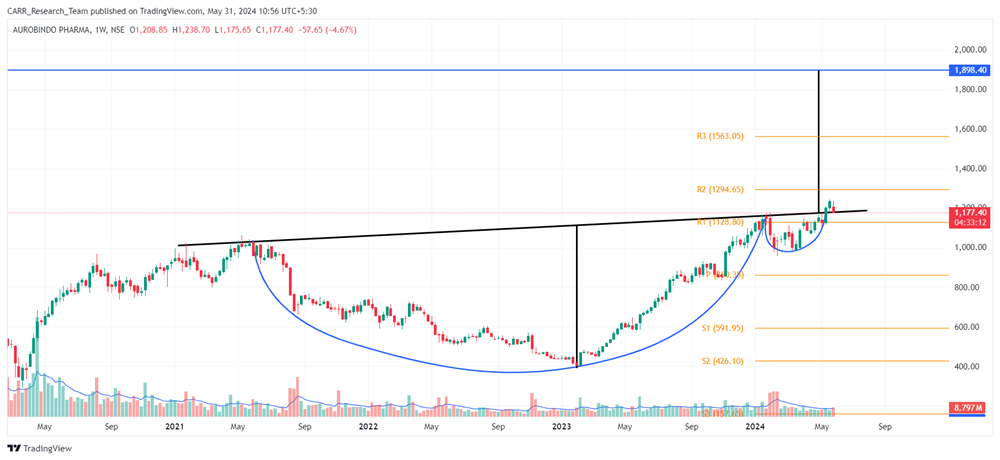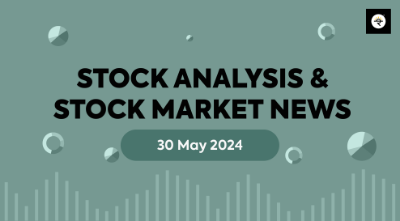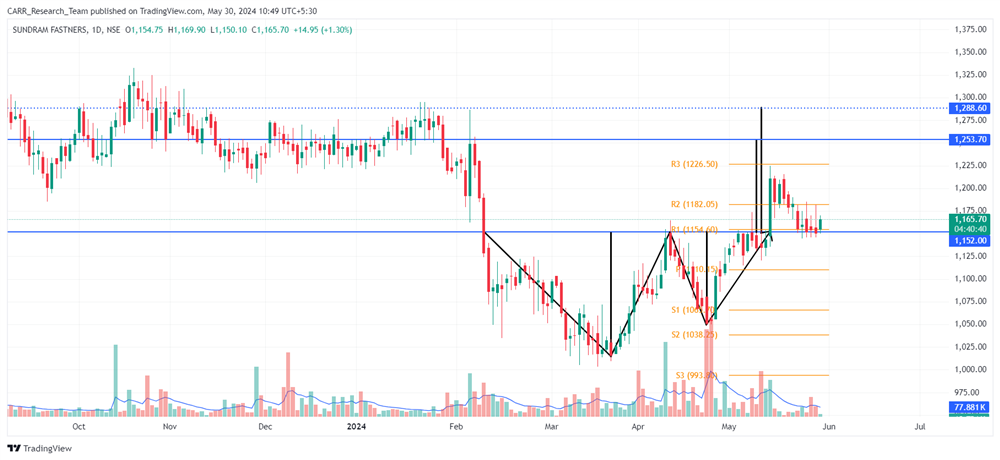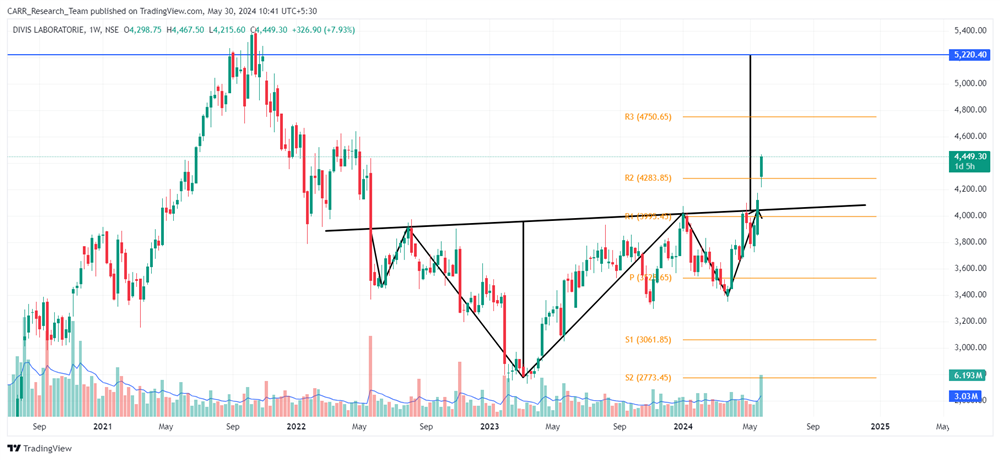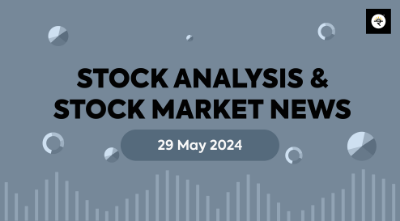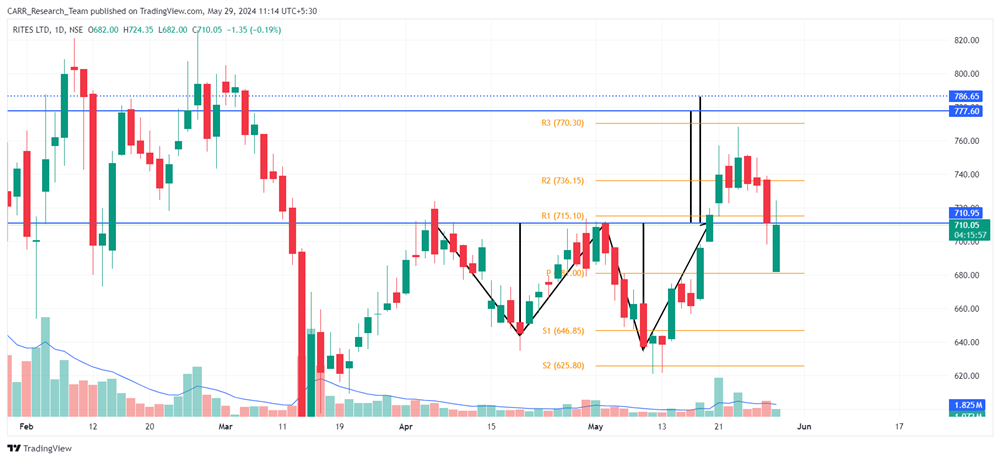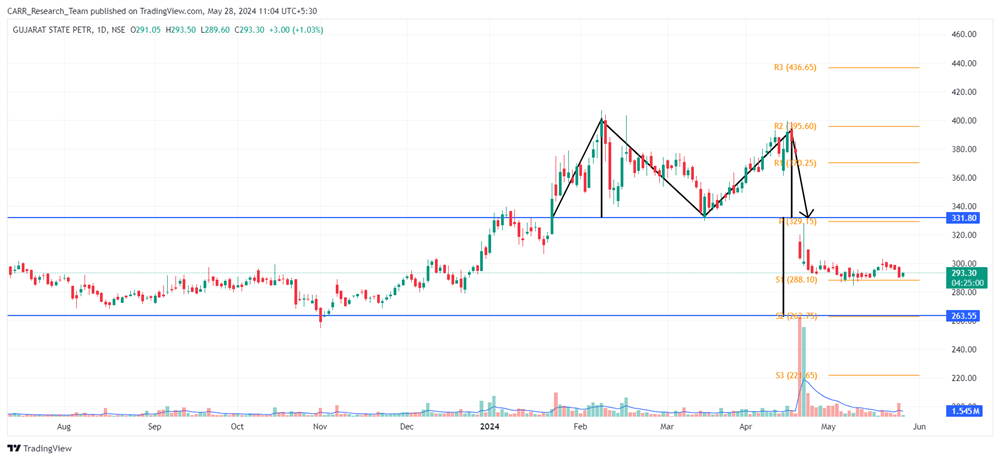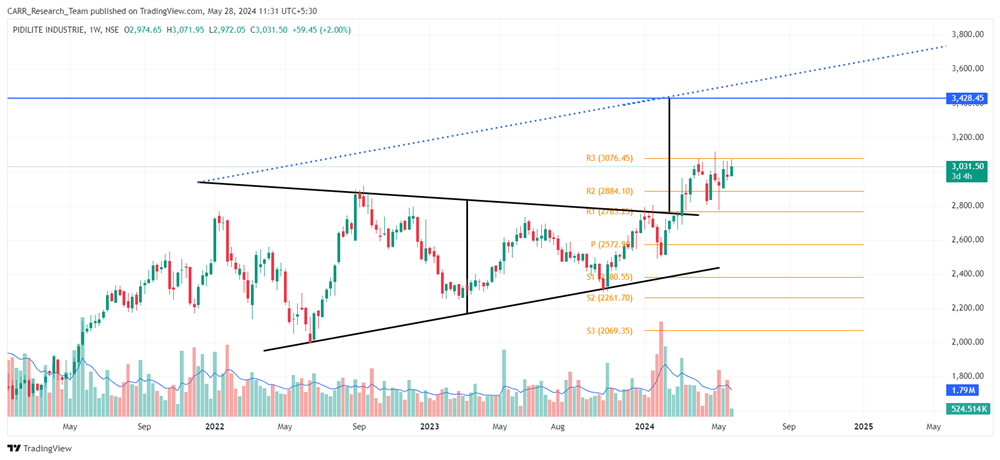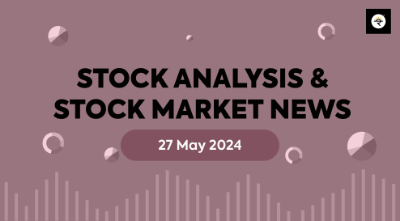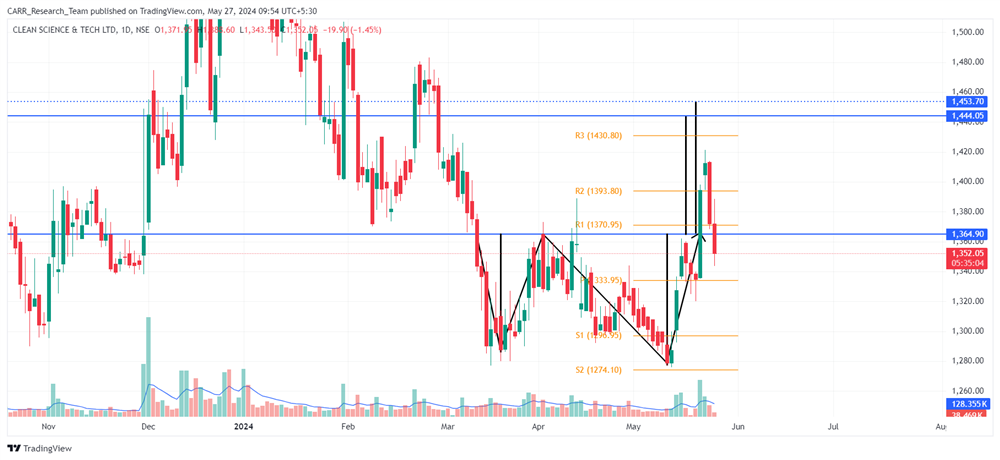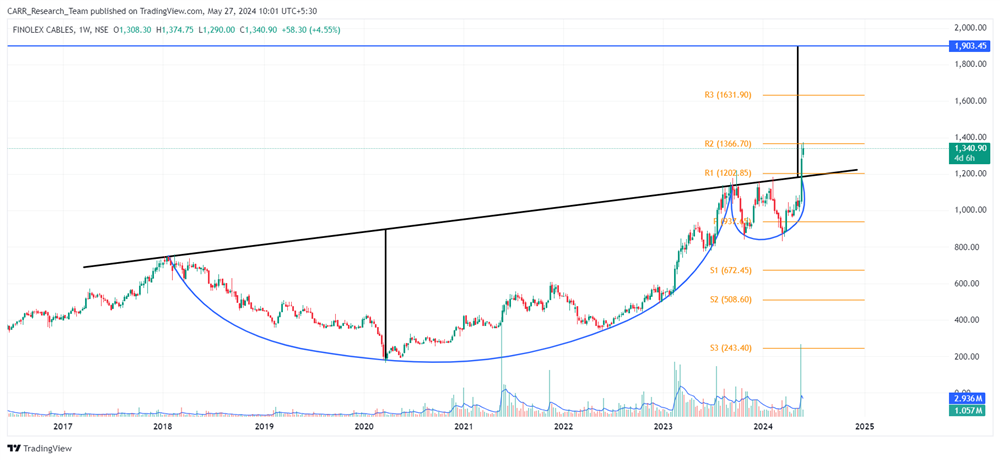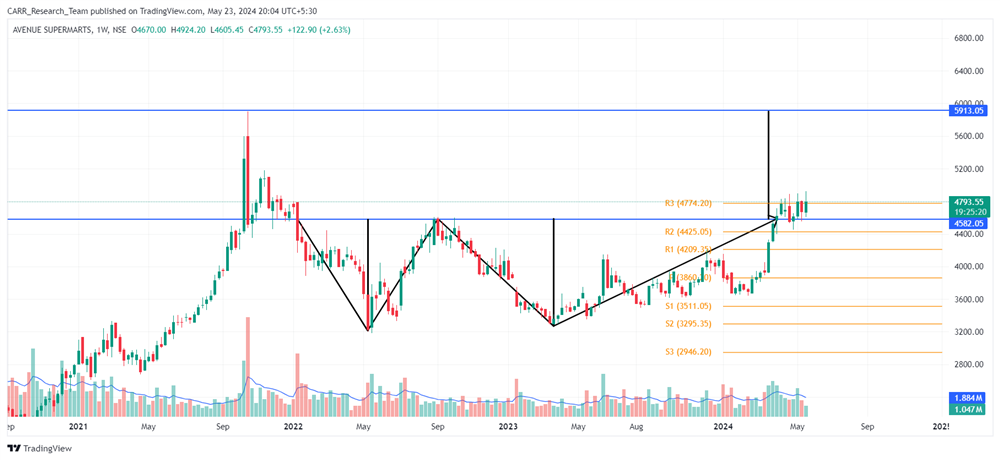Stock name: Alkem Laboratories Ltd.
Pattern: Double top pattern
Time frame: Daily
Observation:
The stock has risen since its listing. However it has formed a double top pattern on the daily chart from December 2023 to June 2024. Despite being above the neckline, it has been declining due to a bearish MACD signal. The RSI level is also very low. Technical analysis suggests that if the stock breaks below the neckline, it may see further downward movement.
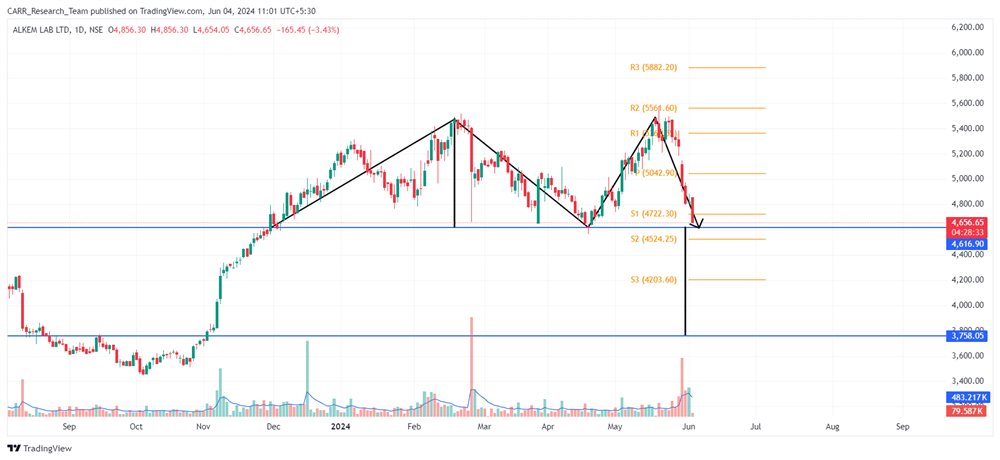

Stock name: CIE Automotive India Ltd.
Pattern: Inverse head and shoulders pattern and retest
Time frame: Daily
Observation:
Since July 2023, the stock has shown a mix of sideways and downward movement. Recently, it formed an inverse head and shoulders pattern on the daily chart, breaking out on May 21, 2024, with high volume and a bullish MACD signal. Currently, the stock is retesting the breakout level, which has cooled the RSI to a favourable level. According to technical analysis, if the stock rebounds from this retest, it might move further upward.
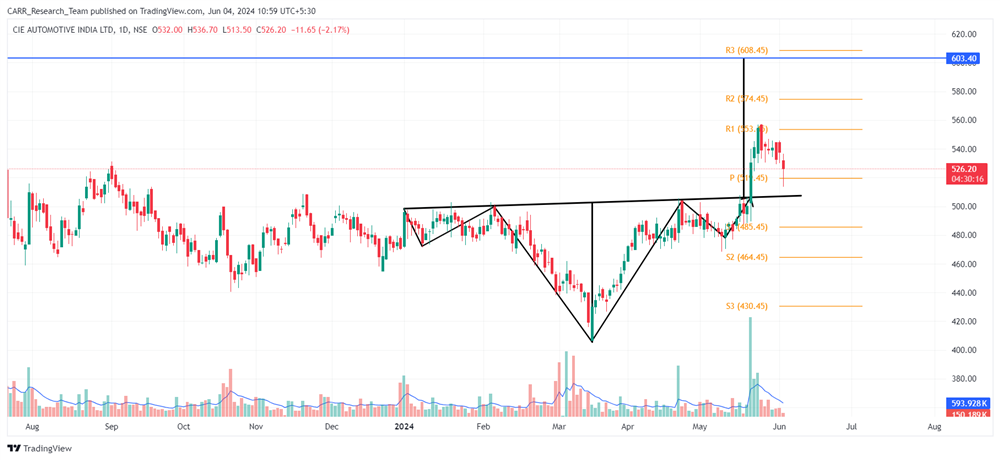
You may add this to your watch list to understand further price action.
Disclaimer: This analysis is purely for educational purpose and does not contain any recommendation. Please consult your financial advisor before taking any financial decision.
News for the day:
- Mukesh Ambani's exclusive 5G deal in Ghana faces backlash from the National Democratic Congress (NDC). They argue that the $125 million, 10-year contract with Next Gen Infraco, which partners with Ambani's Radisys Corp., undervalues the 5G spectrum and deprives the debt-ridden nation of potential revenue. Critics claim a formal bidding process could have generated up to $500 million, highlighting the urgent need for foreign exchange and non-tax revenue.
- Uno Minda, a major auto parts supplier, has significantly outpaced industry growth, with its revenue increasing by 25.2% in FY24 and stock rising 37% recently. This success is driven by its lighting and light metal technology divisions, which contribute nearly 50% of revenue, and a strong focus on premium offerings and the electric vehicle (EV) segment. The company's kit value has seen substantial growth, particularly in premium bikes and SUVs. Uno Minda secured significant EV orders worth ₹3,755 crore in FY24 and plans to invest heavily in capacity expansion, maintaining a high valuation due to promising growth prospects.
- Adani Group and ICICI Bank have launched co-branded credit cards offering airport-linked benefits. Integrated with the Adani One app, these cards provide Adani Reward Points, lounge access, free air tickets, and duty-free shopping discounts. This venture marks Adani's entry into the financial sector, aiming to enhance customer travel experiences.
